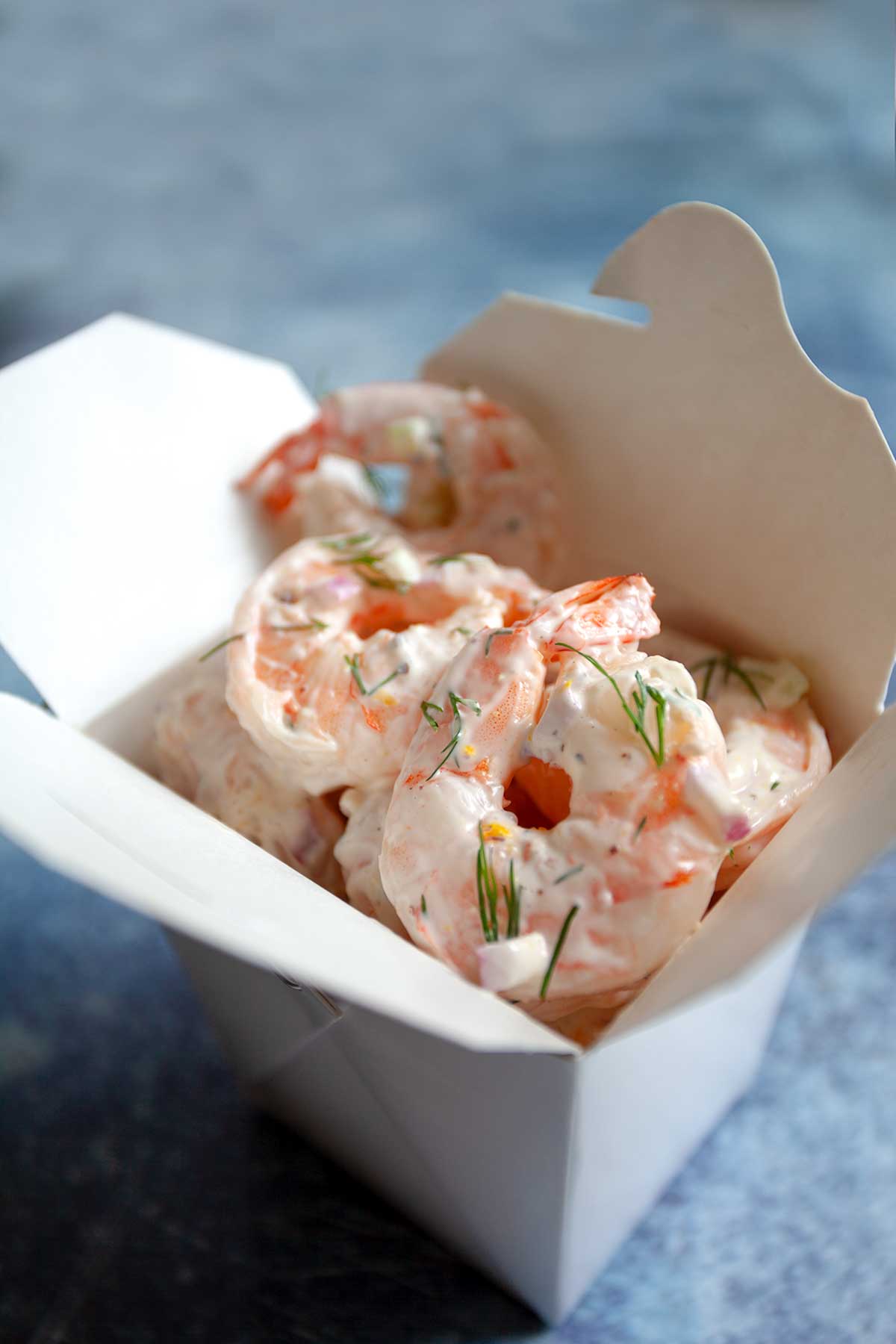
Creamy but not gloppy. Light but not abstemious. And easy peasy to make yet elegant to behold. That’s what we think of this shrimp salad, which is gonna rock your world. And your cocktail party. And your work lunch rotation.
Want to Save This?
Write a Review
If you make this recipe, or any dish on LC, consider leaving a review, a star rating, and your best photo in the comments below. I love hearing from you.–David
Featured Review
Thank you! I made a quarter of a recipe and served on rolls with lettuce. Delicious. I used 8/12 shrimp and chopped them up a bit. I made it early in the day and then left in the fridge to chill. The dressing did get a bit liquidy but not too bad, and it did not affect the flavor.
I very much appreciate everything about your site. Bringing recipes to my attention, reviews from people who have tried the recipe, tips, your awesome responsiveness to questions, a great and effective search feature. You have it all!
Mom24
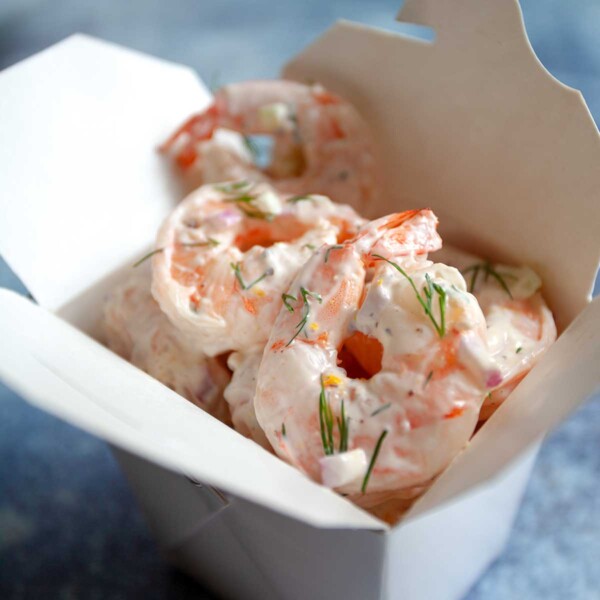
Shrimp Salad from Ina Garten
Ingredients
- 3 tablespoons plus 1 teaspoon kosher salt
- 1 lemon, cut into quarters
- 4 pounds large shrimp in the shell*, 16 to 20 shrimp per pound
- 2 cups mayonnaise
- 1 teaspoon Dijon mustard
- 2 tablespoons good white wine or white wine vinegar
- 1 teaspoon freshly ground black pepper
- 6 tablespoons minced dill leaves
- 1 cup minced red onion, 1 onion
- 3 cups minced celery, about 6 stalks
- A few gratings of lemon zest, optional
Instructions
- Bring 5 quarts water, 3 tablespoons salt, and the lemon to a boil in a large saucepan. Add half the shrimp and reduce the heat to medium. Cook, uncovered, for only 3 minutes, or until the shrimp are barely cooked through. Use a slotted spoon to move the shrimp into a bowl of cool water.
- Bring the water back to a boil and repeat with the remaining shrimp. When cool enough to handle, peel and devein the shrimp and place in a large bowl.
- In a separate bowl, whisk together the mayonnaise, mustard, wine, 1 teaspoon salt, the pepper, and dill. Add as much of the dressing as you like to the peeled shrimp along with the red onion, celery, and lemon zest, if using, and gently toss. Taste and adjust the seasonings accordingly. Serve immediately or cover and refrigerate for a few hours.
Notes
*How long will cooked shrimp last in the fridge?
We say this a lot around here—you’ll be lucky to have any leftovers. But we’re usually right, huh? We know what we’re talking about. However, if you do happen to have any of Ina Garten’s shrimp salad left, cooked shrimp can be refrigerated for up to three days.
Explore More with AI
Nutrition
Nutrition information is automatically calculated, so should only be used as an approximation.
Recipe Testers’ Reviews
Sadly, I’ve been missing out. Sounds weird, but though I’ve cooked shrimp about a thousand times, I’ve never actually made shrimp salad. (Such a thing is very uncommon, if not downright unheard of, where I live.) This recipe allowed me to view shrimp in a different way and got me excited about eating it cold.
Sure, I’ve poached a lot of shrimp, and this shrimp tasted good simply poached in lemon juice, salt, and water. (I tasted a couple, just to see.) The shrimp salad from Ina Garten was also enjoyable with the mayonnaise, Dijon, lemon, white wine, red onion, celery, and dill mixture.
I agree with Ina’s cooking technique and timing. The shrimp were tender and sweet and quite likable. My first shrimp salad experience was a good one. An experience I will undoubtedly repeat!
The only drawback is it seemed like there was a bit too much mayonnaise, but that can very easily be adjusted to personal taste.
This shrimp salad from Ina Garten looked like the perfect addition to my bridal shower luncheon menu, so I decided to give it a try. The fresh dill elevates this recipe to something very special—worthy of a bridal shower or any other special event, but easy enough to throw together for a casual summer lunch or dinner.
I liked the idea of not boiling the shrimp, so I tossed them with a little olive oil and roasted them for 6 minutes in a 400°F oven. When I made the dressing, it looked like a lot for the amount of shrimp. I tend to like salads lightly dressed, so I used just over half the dressing. I also used Vidalia onion to give the salad a milder flavor.
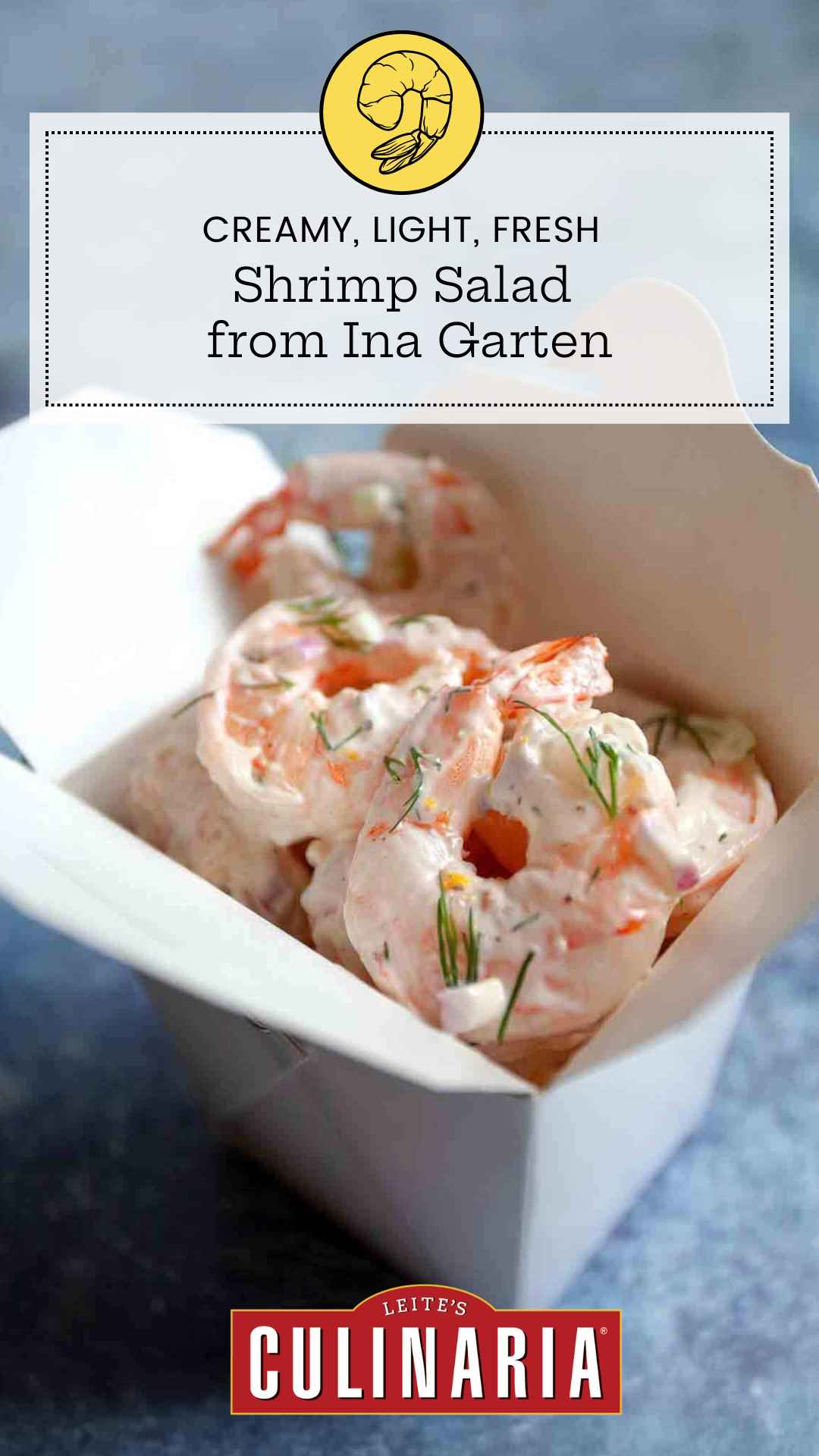
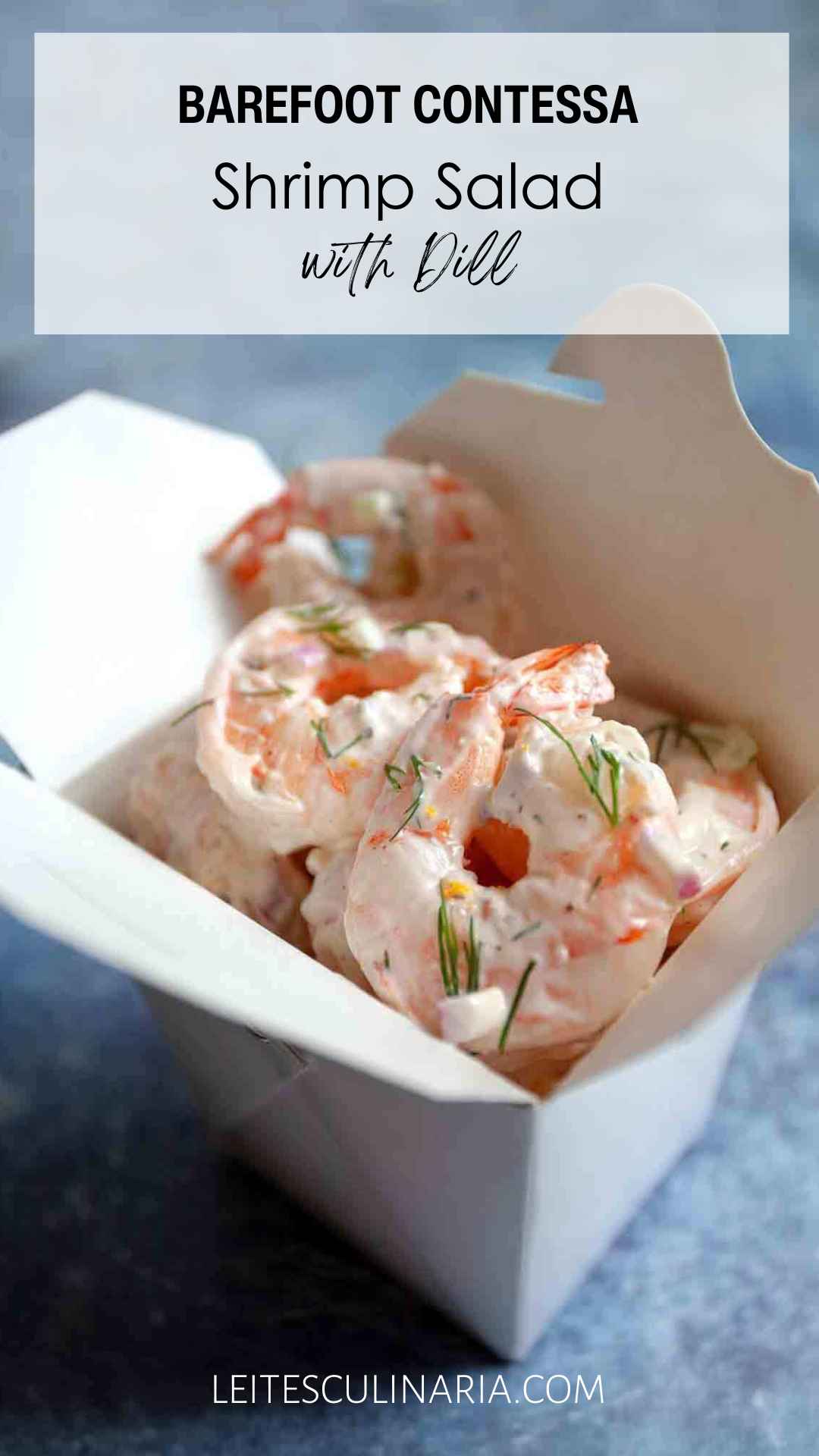
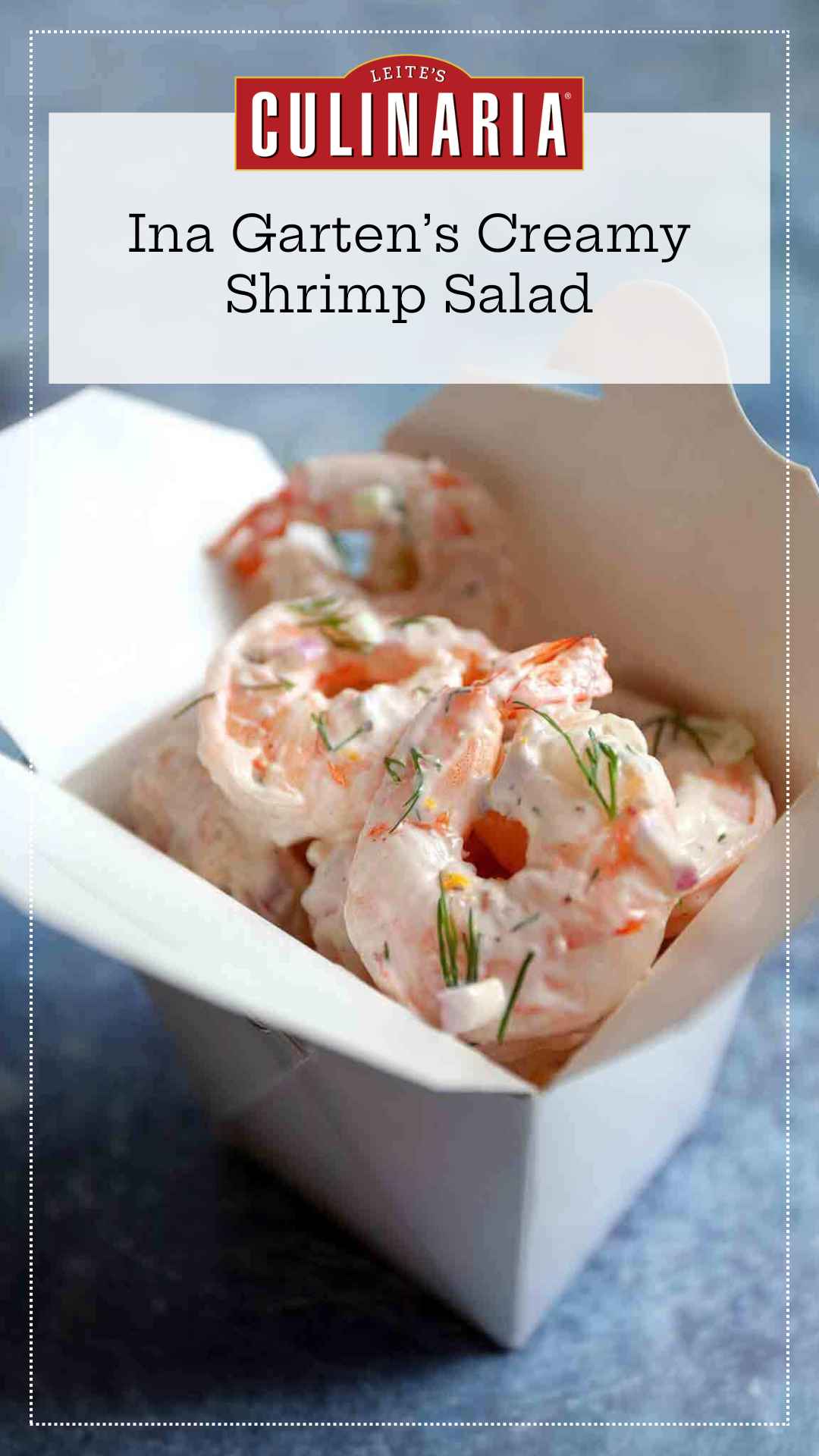
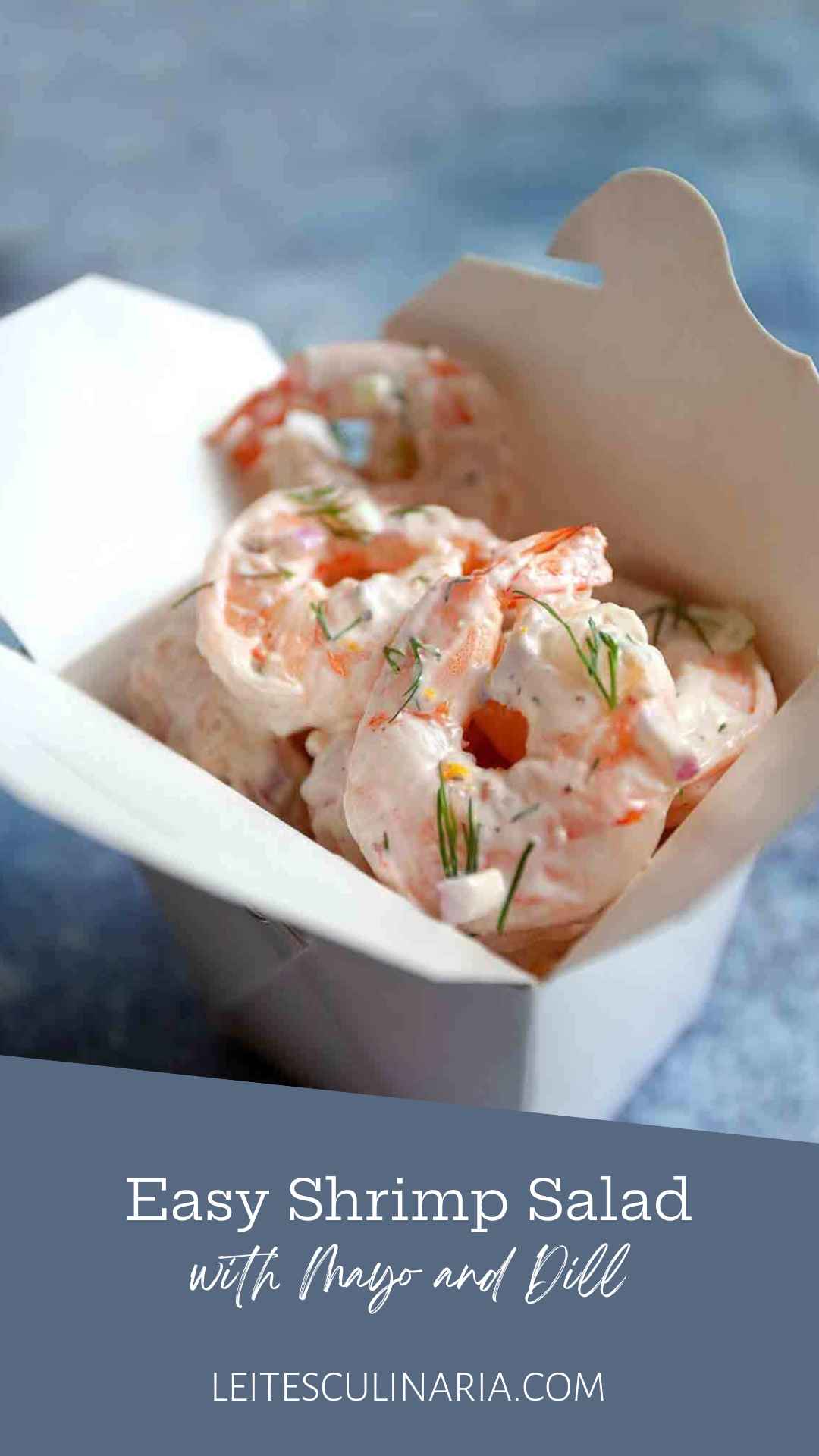
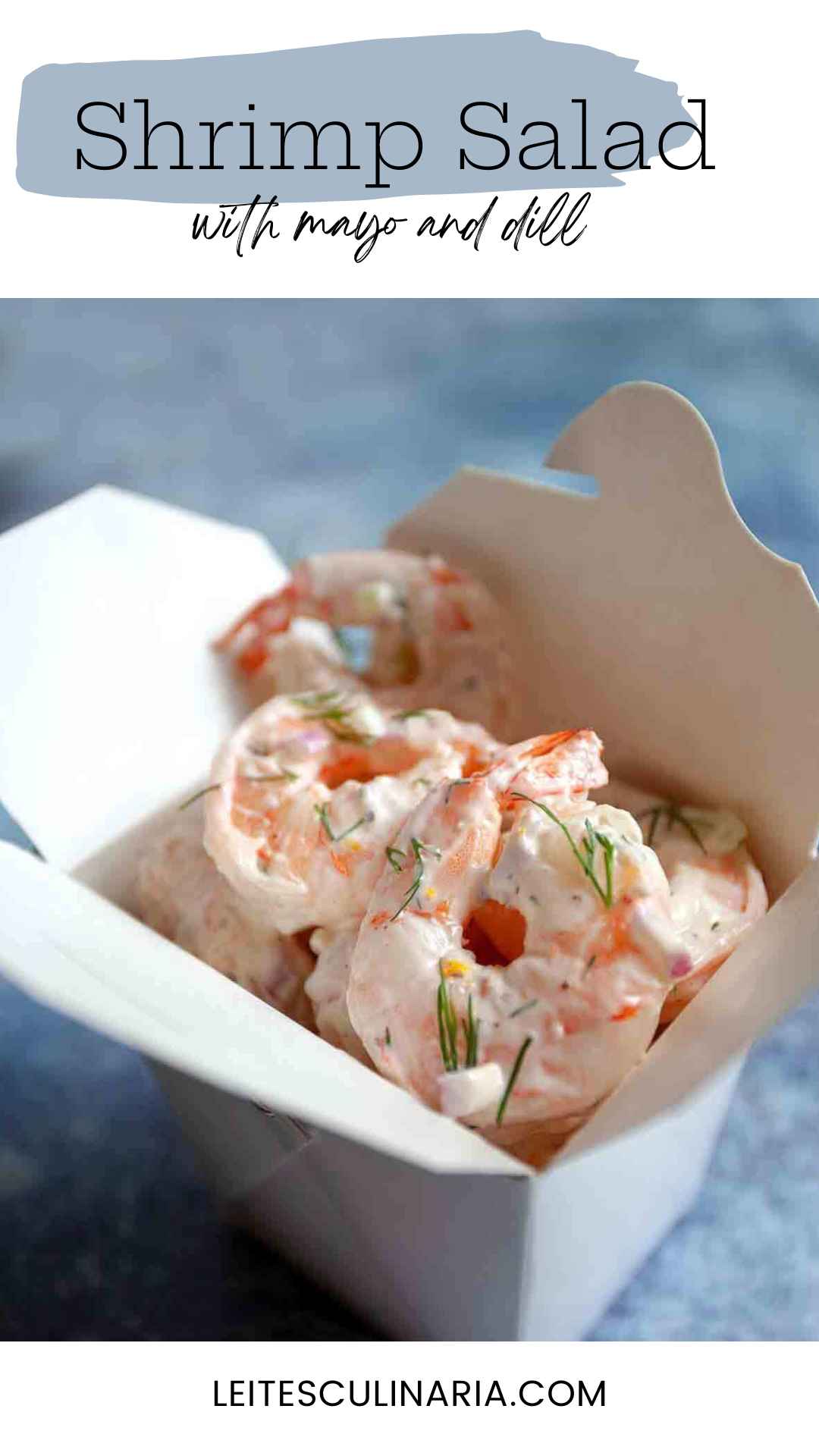
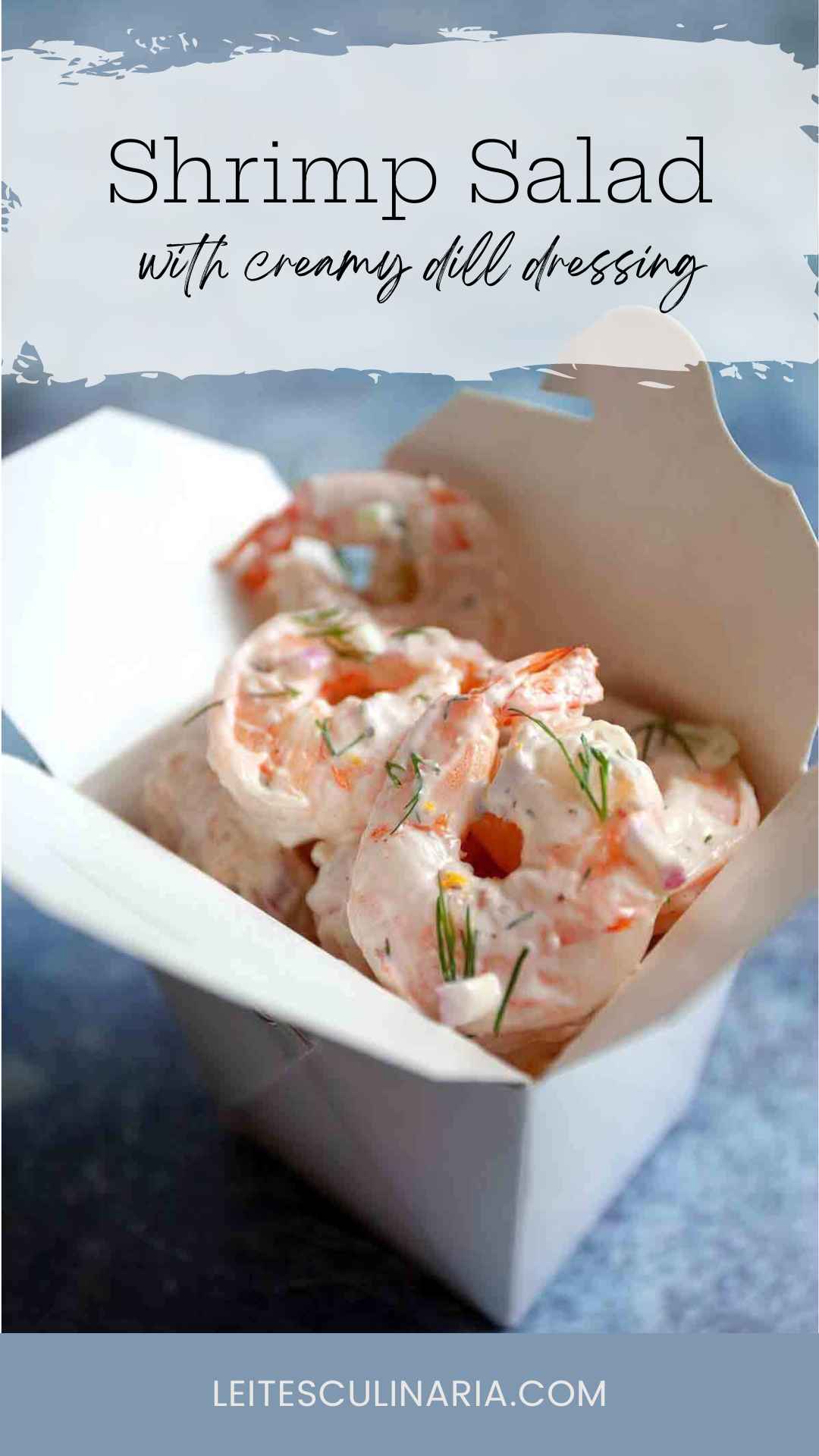











Thank you! Made 1/4 of a recipe and served on rolls with lettuce. Delicious. I used 8/12 shrimp and chopped them up a bit. I made it early in the day and then left in the fridge to chill. Dressing did get a bit liquidy but not too bad, and it did not affect the flavor. I very much appreciate everything about your site. Bringing recipes to my attention, reviews from people who have tried the recipe, tips, your awesome responsiveness to questions, a great and effective search feature. You have it all!
Mom24, you just made my whole week! I’m delighted the shrimp salad turned out so tasty—and serving it on rolls with lettuce sounds spot-on. Smart idea making it early and letting it chill, even if the dressing loosened a bit; sometimes flavors meld beautifully that way. And thank you for your thoughtful shout-out to the site—I genuinely appreciate your kind words.Keep cooking, and please keep sharing your adventures!
Please, 20 shrimp to a pound is definitely not LARGE! That is along the lines of popcorn shrimp size. There should be some guidelines in the culinary world as to Shrimp size and species as well. There seems to be no problem talking about Salmon or Cod, but Shrimp seems generic, which shouldn’t be. There are wild shrimp harvested and farmed. Most of the consumption in the US is farmed Vanameii, (Pacific White Shrimp) they are the most abundant and the least expensive and the run is smaller. Then the Monodon, Tiger which are farmed and wild, they can be much larger, the shell is thicker, and the flesh is crisper. Where I live this species can be had in the grocery stores sized on average 12/13 per pound, whole, fresh, shell on for US$ 7.50/ lb. and I consume many! I consider them a large shrimp, not extra large but a small large.
Hi Larry,
Thanks for your comment and for your passion for shrimp! You bring up some excellent points about the complexities of shrimp sizing.
You’re absolutely right that there’s a lack of standardization when it comes to shrimp sizes. Even within the industry, terms like “large” can be pretty subjective. As you pointed out, a “large” shrimp in one place might be considered medium or even small elsewhere.
I took a look at the sizing guides from several reputable seafood companies (American Shrimp, Bluewater Fish, Fulton Fish Market, and North Coast Seafoods), and even they don’t entirely agree on the count per pound for each size category.
It’s also worth noting that factors like species, whether the shrimp are wild-caught or farmed (which you touched upon), and even the time of year can influence size.
In the case of Ina Garten’s recipe, my guess is she was using “large” shrimp based on what was readily available to her in East Hampton, where she develops her recipes.
Ultimately, the best approach is to use your best judgment and choose shrimp that look appropriate for the recipe. If you’re unsure, don’t hesitate to ask your fishmonger for guidance. They can usually provide more specific information about the shrimp they’re selling.
Thanks again for your comment and for raising this important issue!